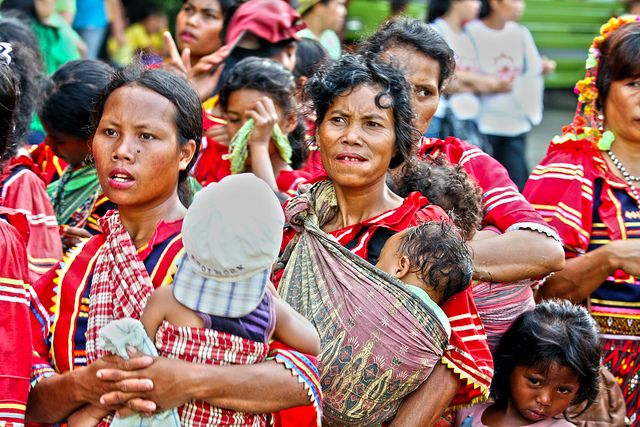Indigenous Peoples and local communities (IP & LCs) collectively manage a staggering 50% of
the world’s land and hold 80% of the world’s biodiversity and 22% of the world’s total carbon in
forests. Yet, shockingly, only 10% of their lands are legally recognized and protected.
A growing body of research showcases the myriad climate benefits of IP & LC managed land,
including lower deforestation rates and better-preserved biodiversity, water, and other natural
resources. Despite these proven advantages, IP & LCs face persistent challenges to their land
claims. Land grabs, encroachments, and environmental degradation not only jeopardize their
lands and cultural heritage but also contribute to the destruction of the very forests and
biodiversity these communities have historically nurtured.
Fortunately, more governments and policymakers are waking up to the evidence that securing IP
& LCs land rights is a front-line strategy in the global fight against the climate crisis. At COP26,
governments and other international donors made unprecedented pledges totaling $1.7 billion to
address Indigenous land tenure. However, the actual flow of resources has been slow, with only
7% of the funding directly reaching affected communities and Indigenous groups as of December
2022.
While financial resources are crucial, the path to legal titling is complex and varies in each
country. Even where laws favor Indigenous rights, a lack of political will, distrust of the
government, and insufficient human, legal, and technical resources plague community efforts to
get the job done.
A powerful solution gaining traction among Indigenous and local community leaders is the use of
digital Geographic Information System (GIS) mapping technologies. These tools help
communities gather digital data required for legal land claims while also enabling real-time
mapping and monitoring of critical assets such as biodiversity, forest cover, natural resources,
and human settlements. Furthermore, these technologies allow communities to monitor and
track potential threats to their land—such as mining, logging, forest fires, drug trafficking, and
encroachments—enabling them to safeguard their territories more quickly and effectively.
There is a great deal to learn from the work done over the past decade by Indigenous
organizations and communities deploying geospatial and digital technologies as tools in the fight
for land rights and the protection of their territories. Take Geoindigena, a dynamic group in
Panama founded by young Indigenous leaders and technologists dedicated to tackling the
technical challenges of securing legal land titles. They have a clear vision: to create a
geodatabase and empower their communities with data-driven insights for better decision-
making on vital issues like land use, carbon markets, governance, and climate change. The co-
founder shared: “Our ancestors and abuelos were not educated like we are, but they had a
territorial vision. We want to use our skills and technology to carry that vision forward.”
Even with improved technical tools and capacity, many Indigenous communities face challenges
in navigating land administration systems and government agencies while ensuring data privacy
and ownership. To address these challenges, Cadasta Foundation directly supports Indigenous
and traditional communities with GIS mapping technologies, training, and services as part of an
initiative supported by funding by UK aid from the UK government Land For Climate and Forest
Rights. Our approach goes beyond mapping; it enhances the capacity of IP & LC organizations to
leverage their data for legal titling, decision-making, and climate action. This includes fortifying
their ability to navigate complex government systems while also advancing initiatives related to
carbon sequestration and ecosystem services. By deploying grants, training, and direct support
services to our IP & LC partners, we acknowledge that they are the best resource to protect their
community lands.
A partnership between Cool Earth and Cadasta, the Rainforest Labs project exemplifies how
Indigenous knowledge, technology, and training can converge to safeguard the Amazonian
territories effectively. Despite having legally recognized land claims, these communities face
significant inequalities and challenges in protecting their forests. This initiative equips the Awajún
and Asháninka communities in Peru with real-time data, satellite information, and biodiversity
monitoring, empowering them to combat threats like forest fires, drug trafficking, and illegal
logging. Since beginning work in 2022, the project has trained Indigenous mappers who have
generated vital data for 1,000 community members who preserve 11,000 hectares of rainforest
and 5 million tonnes of carbon. This data has enabled these communities to respond to 5 major
forest loss alerts and document 203 species on the IUCN red list.
Geoindigena and the Rainforest Labs project exemplify the transformative potential of Indigenous
knowledge and technology in safeguarding forests and natural resources. These examples
should ignite broader recognition of the value of community and Indigenous wisdom. It is time for
a collective effort to respond to Indigenous and community requests for practical, technical
support that will make a difference in securing their legal rights and protecting the land and
natural resources they have stewarded for generations. Although technology is only one tool in
the fight for equitable land and resource rights and protection of our climate, Indigenous Peoples
and local community leaders need continued support as they harness its power to realize their
own visions for a sustainable future.
Amy Coughenour Betancourt
Amy Coughenour Betancourt is the President and CEO of Cadasta Foundation. With over 30 years
of experience, Amy is a results-oriented, mission-driven executive leader with a proven record of
significantly growing organizations. In her role, she has written and presented on land and
property rights issues, particularly focused on community and women's rights and the use of
geospatial technology to advance the SDGs. Amy comes to Cadasta from the National
Cooperative Business Association, CLUSA International (NCBA CLUSA) where she served as the
Chief Operating Officer of International Programs from 2011 to 2018. In this role, she oversaw a
team of over 800 staff and a near tripling of the portfolio in 20 countries across Africa, Latin
America, and Asia working in resilience, food security, and rural development.
Prior to her work at NCBA CLUSA, Amy worked as the Deputy Executive Director of the Pan
American Development Foundation; the Deputy Director of the Americas Program at the Center
for Strategic and International Studies; Washington Director of the Center for Occupational
Research and Development; and as the Vice President for North America for the International
Vocational Education and Training Association (IVETA). She currently serves on the board of
Interaction, the premier alliance of International NGOs working in humanitarian assistance and
development.
About Cadasta Foundation
Founded in 2015, Cadasta is an award-winning non-profit global technology and services
platform enabling vulnerable communities to affordably and easily document, map and secure
inclusive land and resource rights for a more sustainable and equitable planet.
By creating an accessible digital record of land, property and resource rights, and building local
capacity, Cadasta helps empower individuals, communities, organisations, governments and
businesses with the information they need to make data-driven decisions and put vulnerable
communities and their needs on the map. Find out more about Cadasta's work.
This piece was originally published on Geospatial World.


